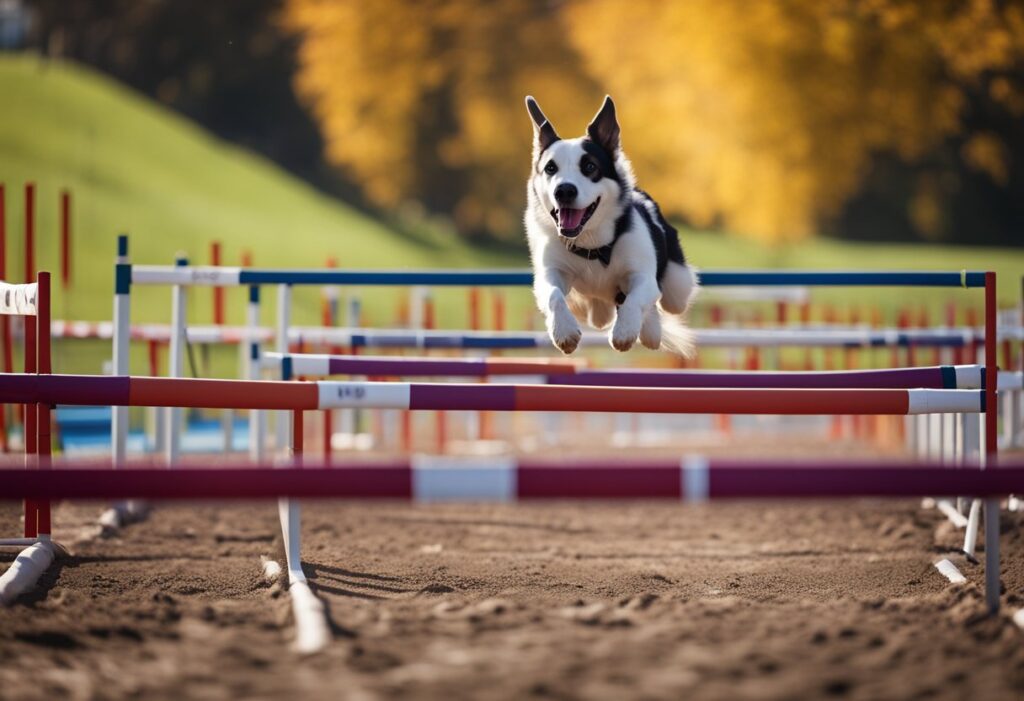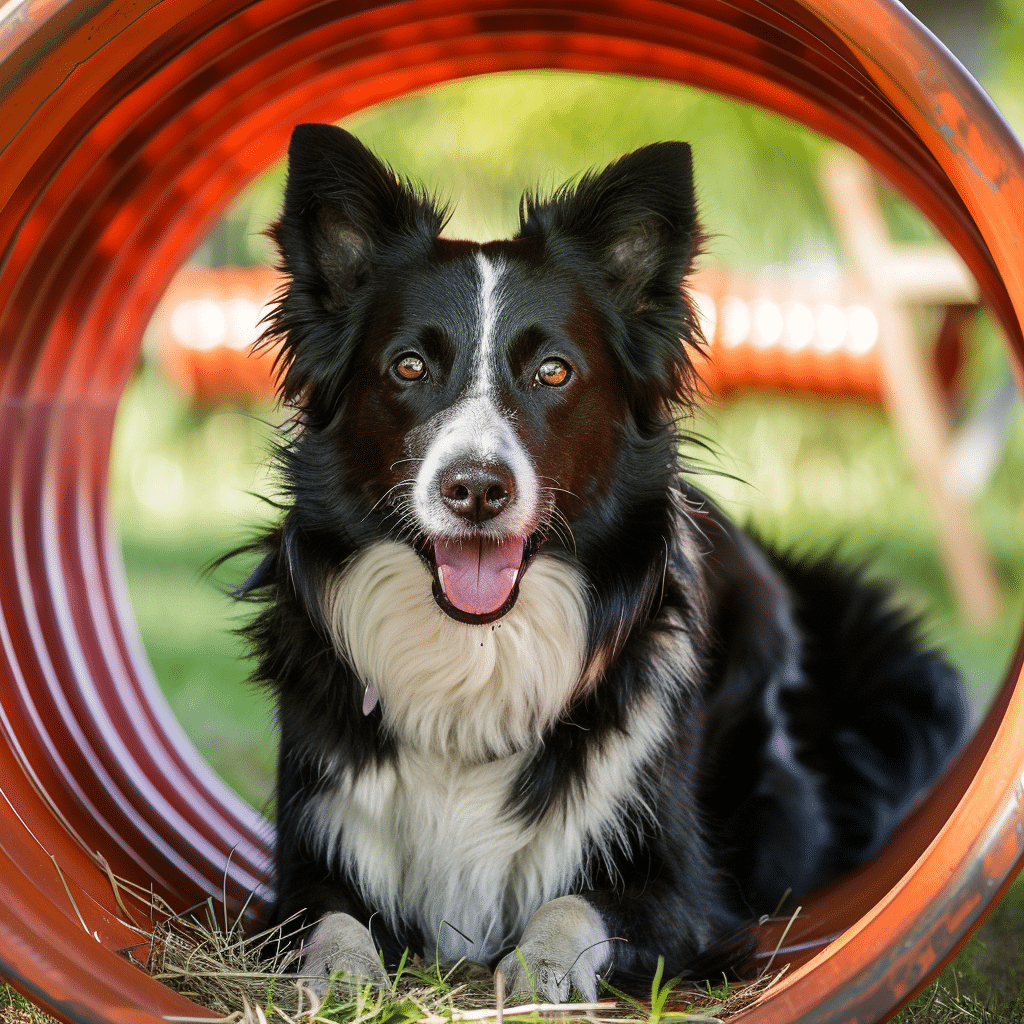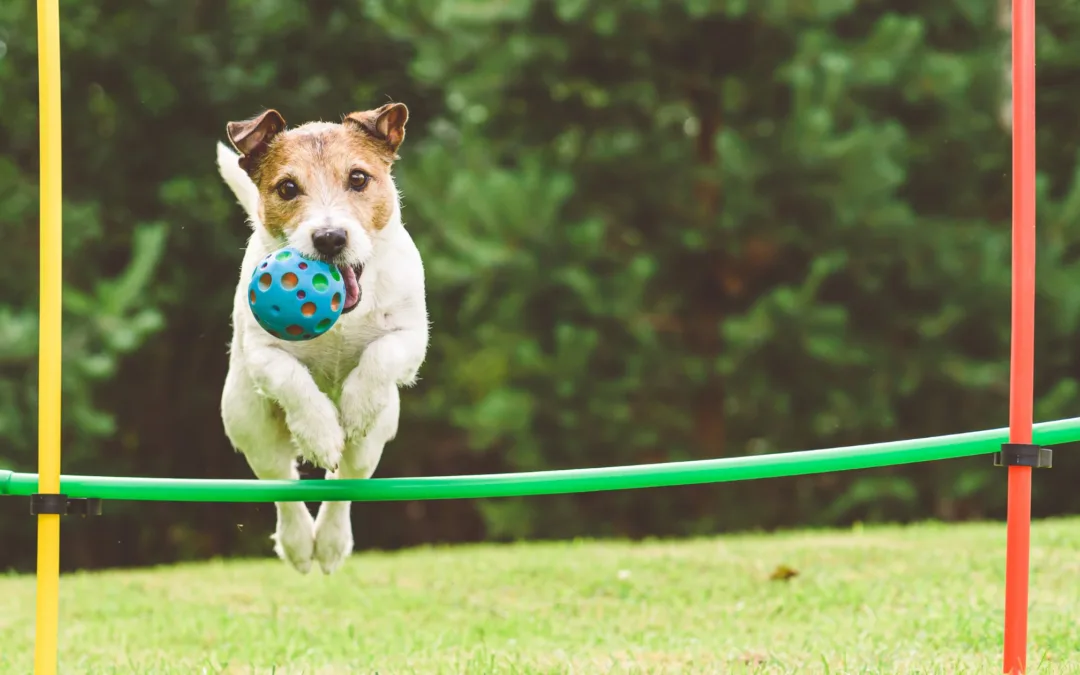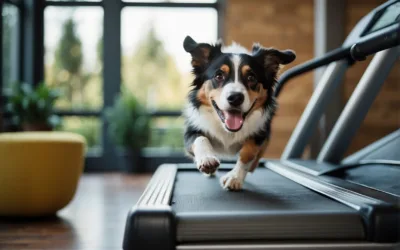5 DIY Agility Course Ideas for Your Backyard: Enhance Your Pet’s Fitness Fun
Creating a DIY agility course in your backyard is an excellent way to enrich your dog’s life, providing both mental and physical exercise. Agility courses can cater to dogs of all sizes and fitness levels, and they are a fun way to strengthen the bond between you and your pet. Not only does agility training keep your dog fit, but it also helps to improve their obedience and dexterity.

Building your agility course doesn’t require a large investment or advanced construction skills. With a few simple tools and materials, you can set up obstacles that challenge and entertain your dog. From weave poles to jumps and tunnels, your backyard can transform into a playground that offers a diverse range of activities to keep your dog engaged and active.
When designing your course, consider the space available in your backyard and the size and ability of your dog. The obstacles you choose to construct should be appropriate for your dog’s age and physical condition, ensuring safety at all times. With creativity and consideration for your dog’s needs, you’ll have a customized agility course that provides hours of fun right outside your door.
Planning Your DIY Backyard Agility Course
Designing a DIY agility course for your backyard requires a blend of understanding the sport and its advantages for your canine companion, as well as a keen assessment of your available outdoor space. This blend ensures that the agility course is not only fun but also safe and appropriate for your dog’s abilities.
Understanding Agility and Its Benefits for Dogs
Agility is a sport that involves a dog navigating through a course with various obstacles under the guidance of its handler. It’s a wonderful way for your pet to get exercise, mental stimulation, and enhanced obedience. Dogs of all sizes and breeds can participate in agility training, which often leads to improved fitness, dexterity, and a stronger bond between you and your dog. It’s a fun activity that can tire out a hyperactive pooch and provide a sense of accomplishment for both of you.
Assessing Your Space for an Appropriate Setup
Before you start building obstacles, take a critical look at your backyard space. The size of your yard will dictate the scale of your backyard agility course. Be realistic about how many obstacles you can fit while maintaining a safe environment for your dog to navigate. Here’s a simple way to assess your space:
- Measure: Note the length and width of the available area.
- Sketch: Create a rough diagram of the space, marking any fixtures like trees or garden beds that might impact the course layout.
- Obstacle Placement: Visualize where each component of the dog agility course will go, ensuring there’s ample room between obstacles for your dog to run and change direction safely.
By combining a strategic layout with an understanding of agility’s perks, you lay the groundwork for an engaging and secure backyard agility course that maximizes fun and fitness for your furry friend.
Essential Tools and Materials

To create a successful DIY agility course in your backyard, focusing on the quality and suitability of your tools and materials is crucial. You’ll want durable yet safe components to construct obstacles like tunnels and jumps that can withstand repeated use.
Choosing the Right Equipment
Your selection of equipment should cater to the specific needs of your agility course. For example, PVC pipes are versatile and can be used to make hurdles, jumps, or weave poles. The pipes offer lightweight strength, making them easy to assemble and adjust. On the other hand, if you’re building more substantial obstacles such as a teeter-totter, you may opt for wood due to its sturdiness and durability.
- PVC Pipe: Ideal for various agility course obstacles.
- Wood: Best for stable structures like platforms.
Gathering Materials like PVC Pipes and Wood
Begin compiling your materials by quantifying the amount of PVC pipe and wood required. For PVC pipes, take precise measurements for the height and length of your obstacles:
| Obstacle | Quantity | Dimensions |
|---|---|---|
| Jumps | 2 | 5ft lengths |
| Weave Poles | 6 | 40in lengths |
Use connectors for the PVC pipes to construct the frame of jumps and weave poles. Wood, on the other hand, may require additional tools like a saw for cutting and a drill for assembling parts. Make sure to smooth any rough edges to ensure the safety of your dog.
- Tools Needed:
- Saw (for cutting wood)
- Drill (for assembling wood structures)
- Sandpaper (for smoothing edges)
- PVC pipe cutters (for clean cuts)
Building and Customizing Agility Obstacles
When building agility obstacles for your backyard, focus on safety, durability, and customization. Here you’ll learn to construct a basic jump hurdle, create weave poles and tunnels, and design a teeter-totter that promises both fun and a great training experience for your dog.
Constructing a Basic Jump Hurdle
To construct a basic jump hurdle, start with PVC pipes. Cut the pipes to the desired height and width, ensuring they are even to prevent tipping. Use T-joints for the base and crossbars, creating a stable structure that can hold up to repeated use. For the actual jump, you can use a lightweight, detachable crossbar that will safely displace if your dog accidentally hits it. Consider painting the hurdle with non-toxic paint to increase visibility and add a personal touch to your agility course.
Creating Weave Poles and Tunnels
For weave poles, space a series of PVC poles approximately two feet apart. The poles should be tall enough for your dog to navigate without difficulty (usually about waist height of your dog). Secure them in the ground with a holder or a base to keep them upright. A tunnel can be made from children’s play tunnels or you can construct one from durable fabric and hoops. Be sure to anchor the tunnel securely to the ground, and if necessary, weigh down the edges with sandbags to prevent shifting during use.
Designing a Safe and Enjoyable Teeter-Totter
When designing a teeter-totter, ensure that the center fulcrum is low enough to not intimidate your dog but high enough to provide a challenge. For the teeter-totter’s surface, use a sturdy plank of wood and coat it with non-slip, textured paint or adhesive materials such as sandpaper. The ends should touch the ground gently, so consider attaching rubber stoppers to soften the impact. Always introduce your dog to the teeter-totter slowly to ensure they are comfortable and confident using it.
Training Your Dog on the Agility Course

Creating a DIY agility course in your backyard offers an excellent opportunity for you and your dog to bond, build confidence, and promote health through physical activity. Proper training on the course involves teaching basic commands, ensuring safety, and gradually increasing your dog’s agility skills.
Basic Commands and Safety Considerations
Before introducing your dog to the agility course, it’s important to have a foundation of basic commands such as ‘come’ and ‘stay’. This ensures that you can maintain control over your dog’s actions, which is critical for their safety and the safety of others.
- Come: This command helps you position your dog at the start of the course.
- Stay: Use this to keep your dog in place before releasing them to run the course.
Safety should always be your top priority. Check the equipment for any issues that could cause injury, like splinters or loose screws, and always inspect the surface for hazards.
Increasing Confidence and Mastering the Course
With the basics in place, focus on building your dog’s confidence on the course. Start with simpler obstacles and give plenty of praise for encouragement. This positive reinforcement helps strengthen your bond and increases their eagerness to participate.
- Begin with easy tasks to ensure early success and boost morale.
- Gradually increase the difficulty as your dog masters each obstacle.
Remember, mastering the course doesn’t happen overnight. Be patient and consistent with your training sessions, and always keep the experience positive for your dog. With time, you’ll see impressive improvements in their agility and confidence levels.
Advancing Agility Skills and Hosting Competitions
To excel in the sport of dog agility, refining your dog’s skills and testing them in a competitive environment are paramount. Whether you’re aiming for official dog agility trials or just adding competitive fun to your backyard training, here’s how you can step up your game.
Preparing for Official Dog Agility Trials
Official trials, often organized by entities like the American Kennel Club (AKC) or the United States Dog Agility Association (USDAA), require rigorous preparation. Begin by familiarizing yourself with the specific rules and regulations of the organization under which you plan to compete. For instance, if you own a German Shepherd, ensure you understand the breed-specific guidelines, as agility courses can vary based on the dog’s size and abilities.
- Skills Enhancement: Enroll in advanced agility classes, if possible, to polish the necessary skills.
- Course Familiarization: Set up your backyard course to mirror those used in official trials. This includes specific obstacle dimensions and sequences.
Organizing Your Own Backyard Competitions
Backyard competitions allow for skills practice in a less formal setting and can be tailored to match the skill level of your dog. They are ideal for creating a simulated competitive atmosphere and involve:
- Invitations: Invite fellow agility enthusiasts to participate, ensuring a range of skill levels for varied competition.
- Regulations: Set clear rules to maintain structure and fairness, just as you would experience in official competitions.
Remember, the essence of hosting backyard competitions is to provide a positive and challenging environment that mimics the intensity and complexity of actual trials. Keep the atmosphere fun but competitive, and use these mock trials to identify areas where you and your dog can improve before stepping into the official agility arena.
From simple jumps to complex tunnels, there’s a range of options to suit every pup’s fitness level and personality. Whether you’re looking to enhance your dog’s training or simply add some excitement to their daily routine, a homemade agility course is the perfect solution. Watch your four-legged companion conquer new challenges and build confidence with each successful run!





Recent Comments